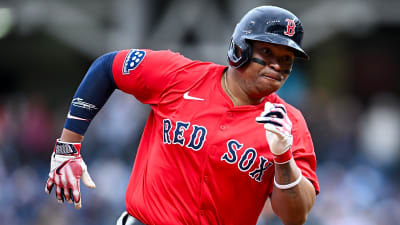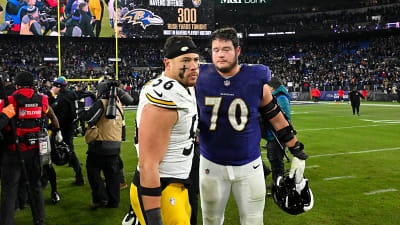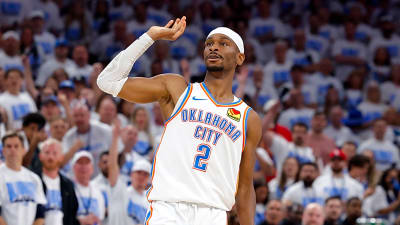
The AL Central draft makeup is quite interesting. The White Sox are the only team in the AL Central with a top-10 pick, and the Minnesota Twins have a top-20 pick with pick #16. The final three, the Guardians, Royals, and Tigers, all made the playoffs and are picking in the latter half of the draft.
Let’s dive into who we mocked to each team and what other draft prospects might be good fits for each club!
Chicago White Sox: Pick 10
Mock Pick: Kyson Witherspoon, RHP – Oklahoma
Why It Makes Sense
I’m sure White Sox fans hate seeing another pitcher here, but the bats would be significantly weaker in this spot, especially if outfielder Jace LaViolette is already off the board.
Witherspoon brings a powerful arsenal to the mound, led by a lively fastball that can flirt with triple digits and a sharp slider that acts more like a hard cutter.
He attacks hitters confidently, and the fastball-slider combo tunnels well, making both pitches tough to pick up.
While he occasionally mixes in a changeup and curveball, he uses those offerings far less.
Given the White Sox’s recent draft strategy, heavily targeting arms while seeing their bats take big steps forward this year, Witherspoon could be a strong fit if they stick with a pitching-first approach.
Other Potential Fits
It seems like many White Sox fans hope that Texas A&M outfielder Jace LaViolette falls to them at number ten, mostly because of the upside and the fact that the White Sox have gone pitching heavy of late.
LaViolette makes a lot of sense for the White Sox if they’re looking to add impact left-handed power to their system. He brings true 70-grade raw power that’s hard to pass up, and while his hit tool has been streaky this spring, the power output still gives him a solid baseline.
There are some concerns, especially with how he’s handled off-speed stuff, particularly sliders from lefties, but he’s athletic enough defensively to stick in a corner outfield spot and still offer value even when the bat cools off.
If the Sox are willing to bet on the power upside and work through the swing inconsistencies, LaViolette could be a strong fit at this point in the draft.
Gavin Kilen is another name that makes sense, as he feels like the kind of steady, advanced college bat that could fit well in the White Sox system.
With some of their recent picks, adding a player like Kilen, who brings elite contact skills and has made noticeable strides with his power in 2025, could help balance things out.
He’s also cleaned up his approach at the plate, cutting down on chase and swing-and-miss rates. Defensively, Kilen can handle shortstop but might be a better long-term fit at second base, where the Sox could use more consistency.
If they’re looking for a high-floor infielder who could move quickly through the system, Kilen makes a lot of sense here.
Minnesota Twins: Pick 16
Mock Pick : 3B/OF Xavier Neyens – Mount Vernon HS (WA)
Why It Makes Sense
The Twins’ farm system has been a well-oiled machine in recent years. They’ve developed a knack for turning mid-to-late-round college arms into good MLB starters (see Bailey Ober, David Festa, etc.).
They are incredibly well-stocked with arm talent throughout their system, particularly at the upper minor league levels.
Three top-100 prospects headline their system: Walker Jenkins, Emmanuel Rodriguez, and Luke Keaschall. If all goes well, all three will be primed to contribute to the major league team in the coming two seasons.
Neyens is a pick with tremendous ceiling. Along with Ethan Holliday, he has some of the best raw power in the prep class.
There are plenty of other tools to like here, too. Neyens takes a patient approach, and the Twins have done well as an organization in recent years by honing swing decisions in their hitters.
It’s a plus arm, too, that could lend itself to right field or third base if he can stick there defensively. This profile resembles Matt Wallner a bit.
Other Potential Fits
While this class is poor for impact college bats in the first round, the Twins pick in a range where a few might be available to them who check some of the boxes they normally pursue.
Tennessee infielder Gavin Kilen isn’t a shortstop, but he should stick in the first with some of the best bat-to-ball skills in the college class.
Arkansas shortstop Wehiwa Aloy would make sense, too, as a more high-risk, high-reward proposition. Aloy has raked in the SEC this year, improved his defense at shortstop significantly, and improved his hit tool and performance against offspeed and breaking stuff.
In short, he has a track record of performance, from playing in the best conference in the country, back up to an otherworldly Cape stint last summer.
Brendan Summerhill makes some sense for the Twins, although missing time to injury and not showing a little more in-game power hurts his case somewhat.
Still, he checks the boxes of strong and improving college performance, athleticism, and playing (at least in the medium term) a premium defensive position.
The Twins haven’t taken a college right-hander on day one in several years, but Witherspoon is a profile that makes sense.
He’s young for his demographic, has a track record of success in the SEC, and has shown remarkable improvement, generating more misses and throwing more strikes in 2025.
-Jamie Cameron
Kansas City Royals: Pick 23 and Pick 28
Mock Picks: #23 3B Josh Hammond – Wesleyan Christian HS (NC)
#28 OF Mason Neville – Oregon
Why It Makes Sense
The Royals have two picks in the top 30 this year, giving them the 11th highest draft pool bonus. This should give them some flexibility to pay down a prep prospect they like.
Josh Hammond makes a whole lot of sense. He was originally considered an arm in this draft because his fastball has been up to 99 MPH and he features a nasty slider, but his bat has made some significant strides this season.
He possesses some solid pop and has improved his plate discipline quite a bit. He also looks the part defensively at shortstop. He’s highly athletic and moves well.
If the Royals want to take a shot on a prep prospect with a ton of upside, Hammond would make sense. He could potentially develop into a third baseman in the future as well.
Other Potential Fits
We mocked Mason Neville for pick #28, but he could also make sense at #23. As we know, you don’t often draft based on team needs, but the Royals have longed for a good outfield prospect. The college baseball home run leader would fit that bill.
Two other names to keep an eye on in the outfield are Indiana’s Korbyn Dickerson and Wake Forest’s Ethan Conrad. Conrad might possess the most upside and was off to a blazing hot start before getting injured.
Missing most of the year due to the injury could mean Conrad falls to #23, but there is a lot to like with the profile, and the underlying data looks very good in a small sample size in the ACC, so a team may take a shot.
We saw the Royals go pitcher-heavy in last year’s draft after taking Jac Caglianone. They snatched up guys like left-handed prep prospect David Shields and one of the safest floor arms in the draft, right-hander Drew Beam, out of Tennessee.
If the Royals decided to lean an arm in the first round, some names to keep your eye on would be Alabama’s Riley Quick, left-handed prep arm Kruz Schoolcraft, and potentially right-hander Patrick Forbes (although it could be a reach with his recent injuries).
Detroit Tigers: Pick 24
Mock Pick: Kruz Schoolcraft, LHP/1B – Sunset HS (OR)
Why It Makes Sense
Kruz Schoolcraft fits the mold of the kind of high-upside prep arm the Tigers have shown a willingness to develop. At 6-foot-8 with big-time extension, he brings a unique look on the mound, and while his fastball can reach 97, the underlying metrics, like spin, aren’t ideal just yet.
Still, the sheer length and deception help the pitch play better than it might on paper. His best weapon right now is a tight low-80s slider that he commands well, and he also flashes a solid changeup with feel.
Detroit’s recent success with Jackson Jobe shows they’re capable of refining raw prep talent into big-league arms, and Schoolcraft’s combination of projection, athleticism, and present stuff gives them plenty to work with.
Other Potential Fits
The Tigers’ draft strategy has taken a clear turn from past regimes, with a greater willingness to take swings on high-upside prep talent and athletic up-the-middle position players.
They’ve leaned into strike zone discipline, contact skills, and defensive versatility, especially with hitters, and have avoided chasing pure velocity on the pitching side, focusing more on unique traits and pitch shapes.
With that in mind, several players could fit Detroit’s mold in 2025, whether it’s toolsy high school bats, polished college hitters with advanced approaches, or pitchers with underlying data that pops.
Three players who make a lot of sense for the Tigers in this class are Andrew Fischer, Wehiwa Aloy, and Daniel Pierce.
Fischer brings one of the most advanced offensive approaches in college baseball and fits Detroit’s emphasis on strike zone control and underlying data.
Aloy offers real right-handed power and defensive stability on the left side of the infield, two traits the Tigers value highly in their positional prospects.
And if they want to swing on prep upside, Pierce checks a lot of boxes: athleticism, speed, impact potential on both sides of the ball, and a rising bat that’s starting to catch up with the rest of his game.
All three align with Detroit’s recent trends of prioritizing hit tools, projection, and defensive versatility.
Cleveland Guardians: Pick 27
Mock Pick: Cameron Appenzeller, LHP – Glenwood HS (IL)
Why It Makes Sense
This feels like a classic Guardians pick. Cam Appenzeller has all the traits Cleveland tends to bet on… projectable frame, clean delivery, and a foundation they can build on.
At 6-foot-5, 185 pounds, there’s plenty of room for added strength, and with the Guardians’ track record of adding velocity, it’s easy to see him ticking up from his current 88–92 mph (ticked up to 93-94 in shorter stints) range into the mid-90s consistently.
He already shows good deception from a lower slot, with a fastball that plays well at the top of the zone and a pair of secondaries, a sweeping breaking ball and a changeup with real fade, that both flash above-average traits.
He’s a strike-thrower with athleticism and mechanical consistency, and there’s real upside here if Cleveland can help him take the next step physically. This one just makes a lot of sense.
Other Potential Fits
After the Guardians took Travis Bazzana at 1.1, they went a mix of prep and college arms CB-A through round 10 (besides catcher Jacob Cozart in round three).
Few teams develop long-levered, projectable arms like the Guardians, which makes Kruz Schoolcraft a fascinating fit. The 6-foot-8 lefty reclassed from the 2026 class but already looks like one of the most intriguing two-way talents in this year’s group.
On the mound, there’s massive upside. He’s touched 97 mph and usually works in the low-90s with big extension and late life up in the zone.
His fastball jumps on hitters thanks to a low release and plus athleticism for his size. The slider, now thrown with a new grip, flashes cutter-like firmness in the mid-80s and shows promise as a glove-side weapon, though the feel still comes and goes.
There’s also a promising changeup with real fade and separation. He’s still learning to sync up his massive frame, but the delivery is clean and repeatable for someone that size. If any org will unlock the ceiling here, it’s Cleveland.
If the Guardians decide to go the arm route, some other arms to watch would be Alabama’s Riley Quick, right-handed prep arm Josh Hammond, and possibly Arkansas left-hander Zach Root (although he could be an undershot option).
More must-reads:
- Sell or stand pat? Cardinals facing difficult choices
- Pirates GM addresses Paul Skenes trade chatter
- The 'Active home run leaders in Major League Baseball' quiz
Breaking News
Trending News
Customize Your Newsletter
 +
+
Get the latest news and rumors, customized to your favorite sports and teams. Emailed daily. Always free!








